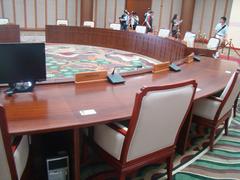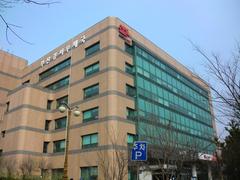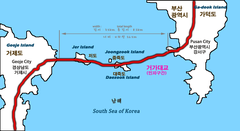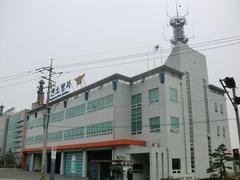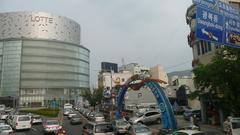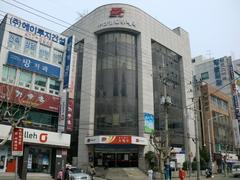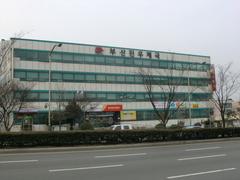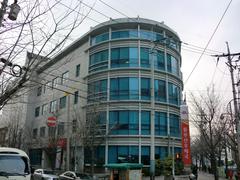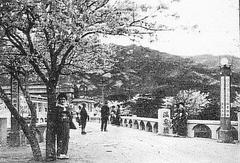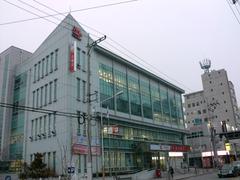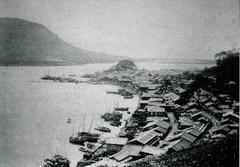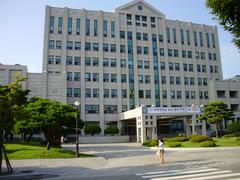Namcheon Station: Visiting Hours, Tickets, and Comprehensive Travel Guide to Busan Historical Sites
Date: 04/07/2025
Introduction
Namcheon Station, a key stop on Busan Metro Line 2 in Suyeong-gu, is much more than a transit point—it’s a vibrant access gateway to some of Busan’s most treasured historical, cultural, and scenic attractions. Its strategic location in the dynamic Namcheon-dong neighborhood connects visitors to the striking Namcheon-dong Cherry Blossom Street, lively Gwangalli Beach with its iconic illuminated bridge, and important historical sites like Suyeong Fortress and the Busan Museum. This detailed guide covers operating hours, ticketing, accessibility, nearby attractions, cultural experiences, and practical travel tips to make the most of your journey in Busan (Open Korea; Klook; KoreaToDo).
Contents Overview
- Origins and Urban Development
- Historical Context & Role in Busan’s Growth
- Cultural and Social Significance
- Visiting Hours, Tickets, and Accessibility
- Architectural & Community Impact
- Nearby Cultural and Historical Attractions
- Visitor Tips & Practical Information
- Notable Events & Festivals
- Frequently Asked Questions (FAQ)
- Sources
Origins and Urban Development
Namcheon Station’s establishment is closely linked to Busan’s rapid modernization in the late 20th and early 21st centuries. Opened as part of Busan Metro Line 2, it was designed to connect the residential and commercial zones of Suyeong-gu with the wider Busan metropolitan area, fostering the transformation of Namcheon-dong from a quiet suburb into a bustling urban hub (Open Korea).
Historical Context
Busan’s roots trace back to the Goryeo and Joseon dynasties, when its coastal harbor fostered cosmopolitan trade. In the post-Korean War era, rapid population growth led to the expansion of neighborhoods like Namcheon-dong. The introduction of the metro system, and Namcheon Station in particular, enabled efficient connectivity for residents and visitors, integrating local communities and supporting access to educational, economic, and cultural centers (Open Korea).
Cultural and Social Significance
Namcheon Station stands at the heart of a culturally rich district. Namcheon-dong Cherry Blossom Street, stretching from Samick Beach Apartment to Gwangalli Beach, becomes a pink-hued corridor each spring, drawing thousands for its cherry blossom festival—an annual celebration of renewal in Korean culture (Klook). The station also provides direct access to Gwangalli Beach, celebrated for its fine sand, energetic nightlife, and the spectacular Gwangandaegyo Bridge, which comes alive with lights at night (KoreaToDo).
Visiting Namcheon Station: Hours, Tickets, and Accessibility
Operating Hours
- Daily: 5:00 AM – midnight (exact first/last train time may vary by direction and day; check in-station schedules for details) (Visit Busan).
Ticketing
- Single-use QR tickets and rechargeable transportation cards (T-money, Cashbee, Railplus) are available at vending machines and convenience stores.
- Day Passes: Unlimited rides for a day, but not valid on buses or light rail (Korea Travel Planning).
- Fares: 1,300–1,800 KRW, depending on distance.
Accessibility
- Elevators, escalators, and tactile paving for mobility and visual accessibility.
- Restrooms and barrier-free facilities for travelers with disabilities.
- Clear bilingual signage (Korean/English) throughout the station.
Architectural and Community Impact
Namcheon Station exemplifies Busan’s commitment to integrating transportation with urban revitalization. Its accessible design, seamless bus and taxi connections, and support for local businesses and cafes contribute to the vibrancy of Namcheon-dong. The station anchors community life and supports the area’s economic growth, particularly during peak festival seasons (KR-INSIDE).
Nearby Attractions and Busan Historical Sites
Cherry Blossom Street
- Location: 10–15 minutes’ walk from Exit 3.
- Highlights: Spring cherry blossom festival, photo spots, local food stalls, and performances (Klook; Trip.com).
Gwangalli Beach & Gwangandaegyo Bridge
- Access: Exit 1, 10–15 minutes’ walk.
- Activities: Beach walks, water sports, seafood restaurants, dynamic bridge light shows, and festivals.
Suyeong Fortress & Suyeong Sajeok Park
- Historical site commemorating Busan’s coastal defenses during the Joseon Dynasty.
- Access: Short walk or bus ride from the station; free admission.
Millak Waterfront Park
- Features: Oceanfront park, sunset views, picnicking, and adjacent seafood market (en.busannavi.net).
Busan Museum & UN Memorial Cemetery
- Exhibits: Local history, Korean War memorials, and cultural displays.
- Access: Short bus or taxi ride from Namcheon Station.
Busan Cinema Center
- Venue for the Busan International Film Festival (BIFF); features architectural landmarks and year-round cultural events (awaytothecity.com).
Dongbaekseom Island
- Nature trails, camellias, coastal views, and APEC House; accessible via subway to Haeundae Station (seoulkoreaasia.com).
Food, Nightlife, and Culture
- Local specialties: Ssiat hotteok (seed-stuffed pancakes), tteokbokki (spicy rice cakes), eomuk (fish cakes), and fresh seafood.
- Nightlife: Rooftop bars, live music, and craft beer pubs near Gwangalli Beach (awaytothecity.com).
- Markets: Jagalchi Fish Market and Gukje Market, easily accessible by subway (adventurebackpack.com).
- Art and installations: Contemporary sculptures and public art along the beach and streets (travel80.com).
Notable Events and Festivals
- Gwangalli M Drone Light Show: Every Saturday, March–September (KoreaToDo).
- Busan Sea Festival: August, with concerts and water sports.
- Busan Fireworks Festival: October, massive pyrotechnic displays over Gwangalli Beach.
- Winter Light Festival: November–February, festive city illuminations.
Visitor Tips
- Best time to visit: Cherry blossom season (late March–early April), early mornings or weekdays for fewer crowds.
- Transit tips: Use T-money or Cashbee cards for convenience; coin lockers are available for luggage.
- Navigation: Download KakaoMap or Naver Map for real-time directions; Kakao T for taxis.
- Etiquette: Priority seating is enforced, eating and loud conversation are discouraged on public transit.
- Accessibility: Elevators and barrier-free facilities ensure easy access for all visitors.
FAQ
Q: What are Namcheon Station’s operating hours?
A: 5:00 AM to midnight daily.
Q: How do I purchase tickets?
A: At vending machines (multilingual) or with rechargeable cards.
Q: Are there entrance fees for nearby historical sites?
A: Most, such as Suyeong Fortress, are free.
Q: Is Namcheon Station accessible?
A: Yes, with elevators, tactile paving, and clear signage.
Q: What foods should I try nearby?
A: Ssiat hotteok, grilled clams, raw fish, tteokbokki, and eomuk.
Quick Reference Table
| Mode | Access Point/Route | Approx. Time | Notes |
|---|---|---|---|
| Subway | Line 2, Namcheon Station (211) | Varies | Transfer at Seomyeon for Line 1 |
| Bus | Airport Limousine, Local Buses | 1 hour | Direct from airport, citywide coverage |
| Taxi | Kakao T app, Local stands | 20–60 min | Fastest for direct routes |
| Walking | Cherry Blossom Street, Gwangalli | 10–20 min | Easy from station exits |
Conclusion
Namcheon Station is an indispensable hub for exploring Busan’s coastal beauty, cultural vibrancy, and storied past. With extensive operating hours, accessible facilities, rich nearby attractions, and seamless metro connections, it sets the stage for a rewarding journey through Busan. Enhance your visit with the Audiala app for real-time guidance, and make the most of your stay by experiencing the local cuisine, festivals, and historical landmarks this unique area has to offer.
Sources
- Busan: A Historical Journey, South Korea’s Second Largest Metropolitan, 2025, Open Korea
- Namcheon-dong Cherry Blossom Street, 2025, Klook
- Top Festivals Busan, Korea, 2025, KoreaToDo
- Busan City Architectural Committee and Urban Development, 2025, KR-INSIDE
- Must-See Cultural Events in Busan for 2025, Haps Korea
- Namcheon-dong Cherry Blossom Street Guide, Trip.com
- Things to Do in Busan, Seoul Korea Asia
- Busan Popular Attractions, Busan Navi
- Best Things to Do in Busan, Away To The City
- Busan Cultural Experiences, Travel80
- Busan Culture and Food Guide, Adventure Backpack

